Use these tactics
Let’s explore these tactics with an example: a coffee drinking friend
Your friend needs help improving their coffee-making process. This simple example is to practice with friends or colleagues before applying it to more significant innovations.
1
Use Diagnostic ‘Shop Along’ to observe your customer
Use Diagnostic ‘Shop Along’ to observe your customer
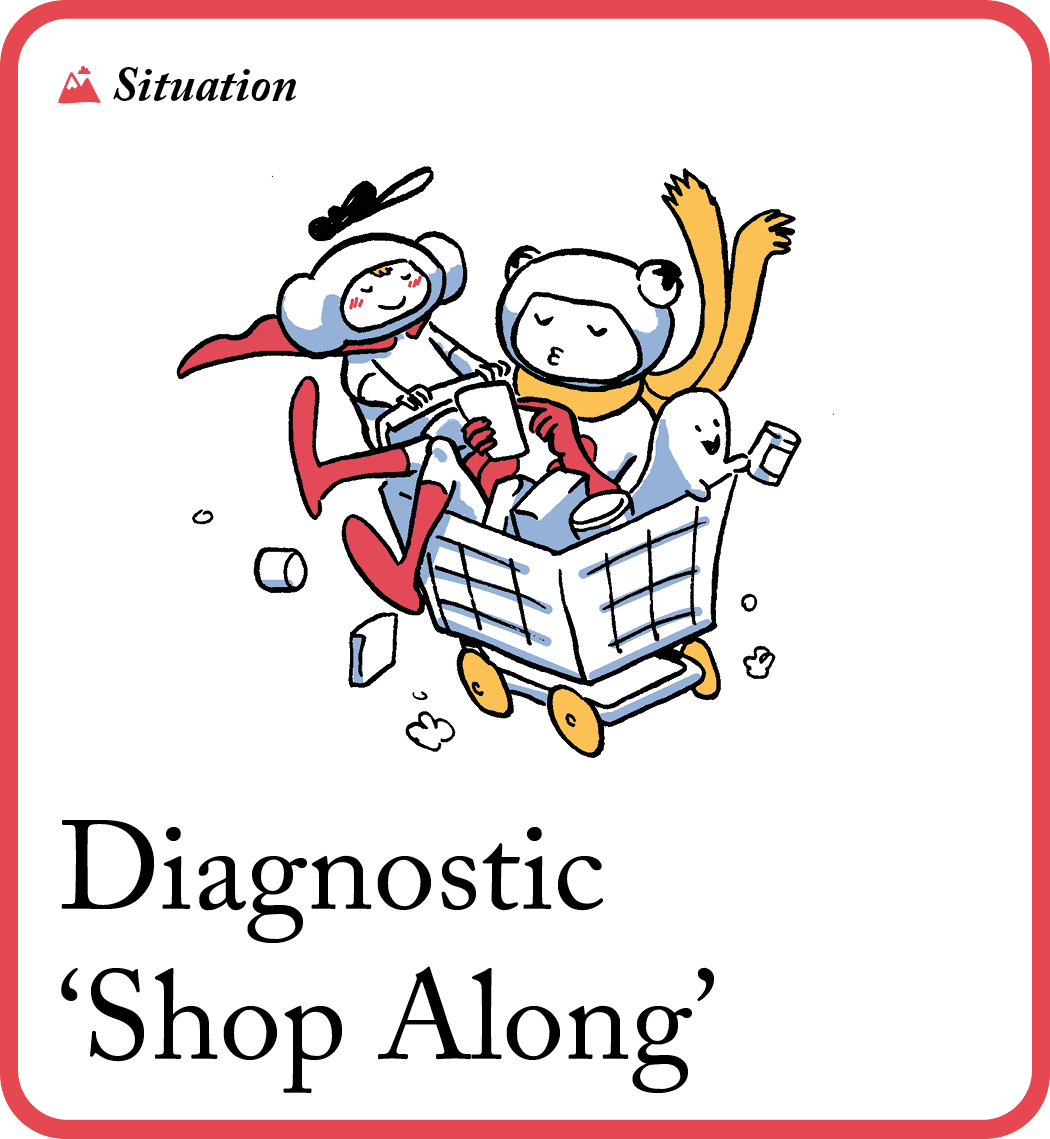
🧠 What’s the goal? Understand what an experience was really like for someone by recreating it live. You’ll see details they couldn’t tell you from memory alone.
👀 Why is this important: This tactic enables you to learn from what your customer is not saying, by setting up real-life interactions. Just like when you’ve lost your keys, it helps to retrace your steps. Likewise, being with someone as they experience something in real time lets you observe nuances they’re not conscious of, giving you a more accurate account of their experience.
💡 Tip: do it with a friend or colleague to get started. Make sure to record or take notes while doing it. It should take an hour or less.
Instructions
Example situation: your friend waking up at home and making coffee.
-
Ideally, you’d have been there with the person during the original experience. Instead, recreate the experience for them as closely as you can. In this case, get them to re-create their morning coffee-making.
-
Ask them to set the scene. What had just happened beforehand? Where were they? Who else was there?
-
Next, ask them to walk you step by step through the whole experience. (Every stop in the store, every tap in the app, all the conversations, clicks and confusions…)
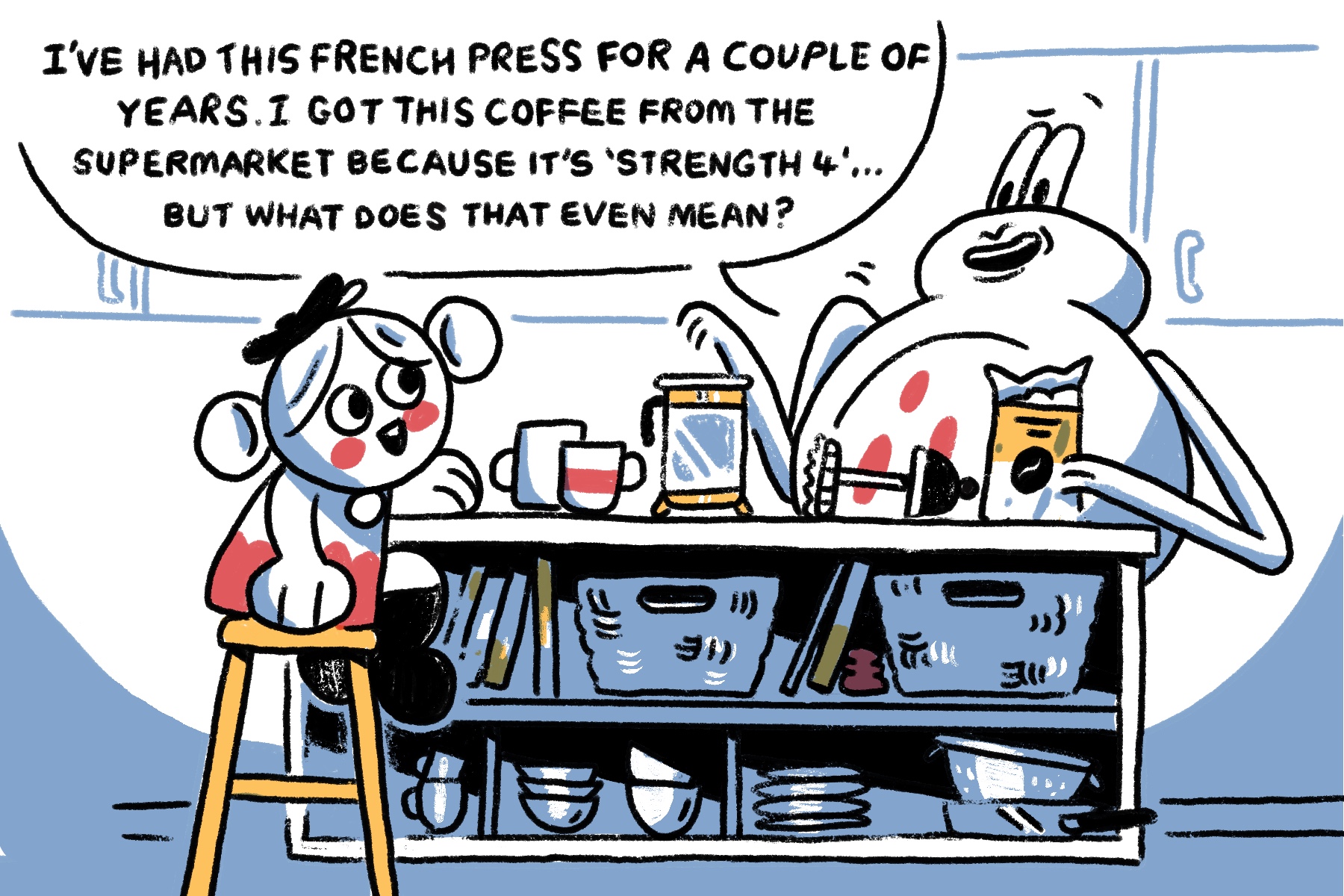
Tip: get them to think (or read) aloud, and to narrate a ‘sports commentary’ of their thoughts and feelings as they relive them. This helps you spot fine details.
-
Closely observe the person’s actions, words, tone of voice and emotions. When any of those surprises you, follow your curiosity and ask what’s behind it. Learn how this person perceives and thinks about the situation.
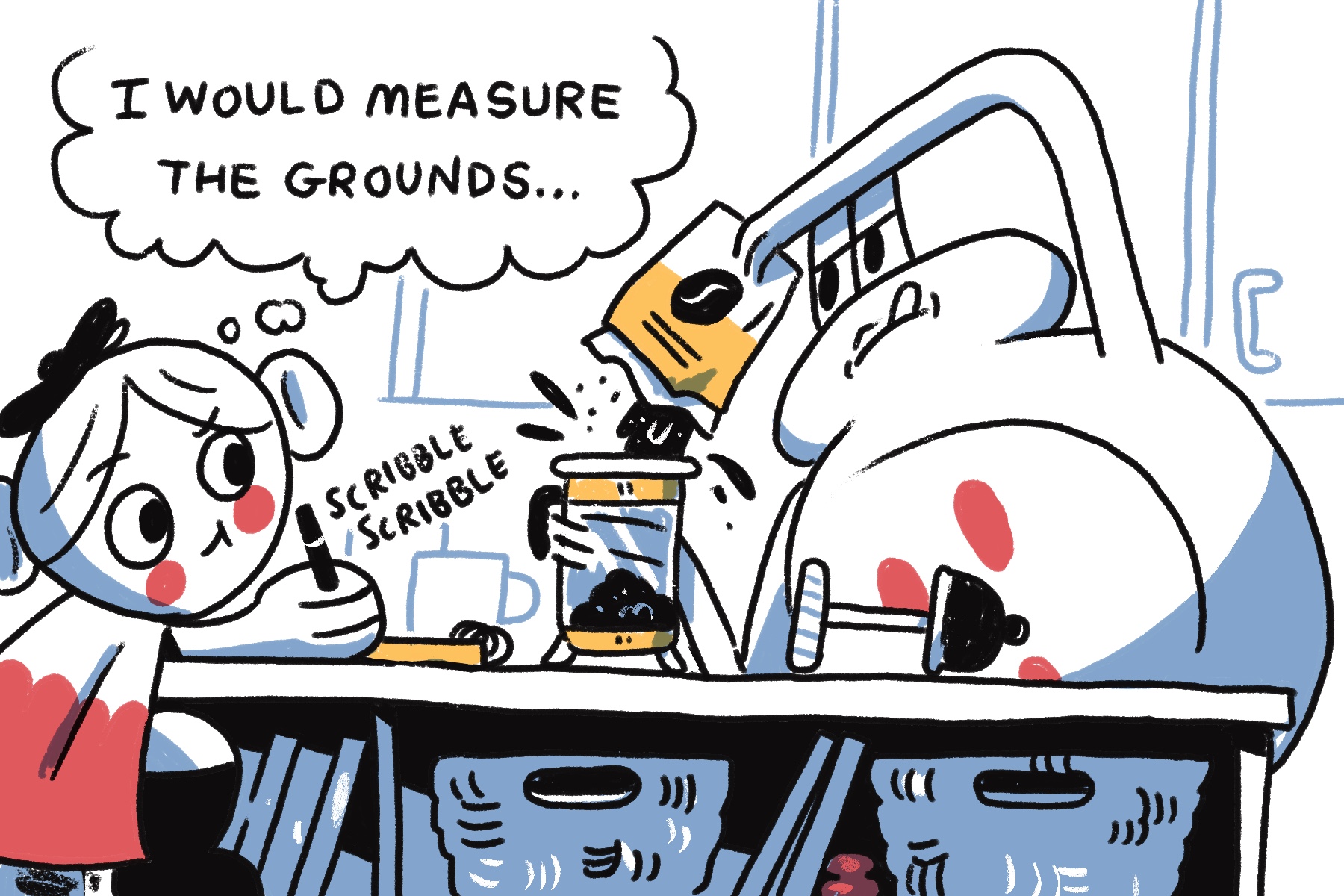
-
At the end, ask how they feel about the experience. You need to know if their perception differs from what you thought they had experienced. Use your notes to spot opportunities where you could improve on the experience you captured.

⬇️ In the next tactic, taking what you have learned from your observation you will create a Human Story Map to get an overview of your user’s experience.
2
Use Human Story Map to document and spot opportunities
Use Human Story Map to document and spot opportunities
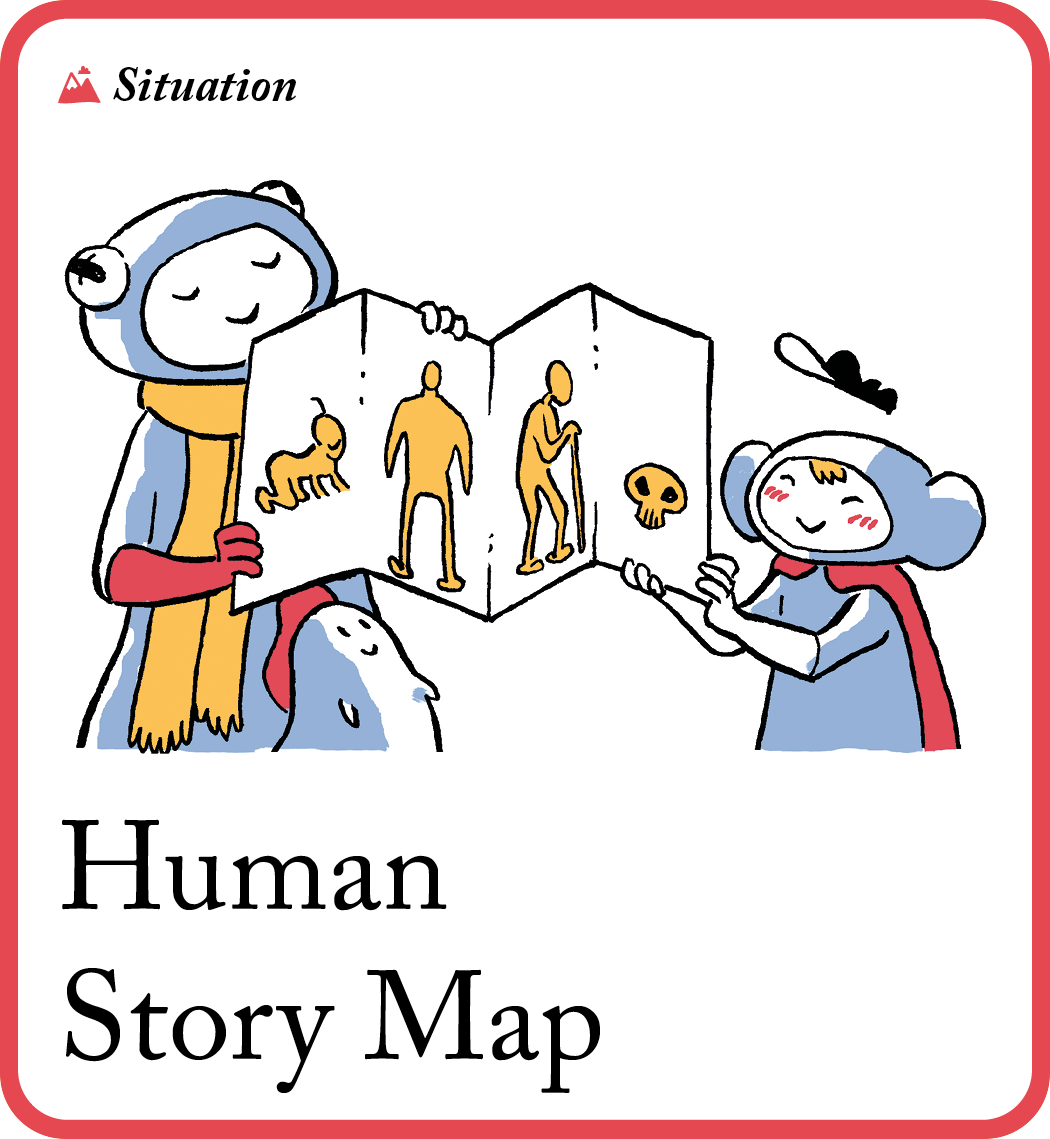
🧠 What’s the goal? Tell the story of how your user is currently meeting needs in their life, so you can spot opportunities for innovation and choose one step to make better for them.
👀 Why is this important: This tactic gives you a realistic picture of your customer’s profile and an opportunity to pause and think what you would want to do differently. In our excitement to build, we can easily lose sight of the people who’ll eventually use our ideas. The consequence is that nobody wants what we’ve made. If you can’t tell a clear story, it’s a sign you don’t yet know your customer well enough to come up with good ideas.
💡 Tip: “The medium of innovation is real human behaviour in the real world.” – Robert Fabricant
Instructions
To generate ideas that people might want, gather your team (or start with only yourself) around a workspace to tell the story of what customers do to meet a need. This is the template for this activity:
-
Ask: “in the context we care about, who’s the hero of the story and what larger need are they trying to meet?”. Add answers on pink stickies at the top of your workspace.
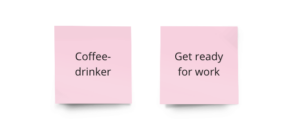
-
Ask: “what’s the very first thing they do?” Add that task on a yellow sticky at the left of the workspace.

-
Ask: “what’s the next thing they do?” Add that task on a yellow sticky to the right of the first. Tip: write each task using the words the hero of the story would use.

-
Repeat step 3 until the hero achieves their goal. Make sure to add options under a task. For example, make coffee or make tea.

-
Frequently pause to read the story out loud. Look for gaps and confusion. Rearrange the stickies until the story makes sense. For example: they get out of bed, brush teeth and then turn off the alarm… hang on, they wouldn’t brush teeth with the alarm blaring!
💡 Tip: if you get stuck, you need to know more about your user’s context.
-
Write any questions and concerns that occur to you on orange stickies under the main story.

-
Add an activity description on a green sticky above each set of tasks (yellow stickies) that naturally go together. For example: breakfast = make coffee, make toast, drink coffee, eat toast.

- Now, take a step back and take it all in, what is the story of your customer? Which one step could you make better? What is the tiniest worst version of your best idea that can get enough results to get people to the next stage? And remember, you might get it wrong and that is okay, you need to start somewhere.
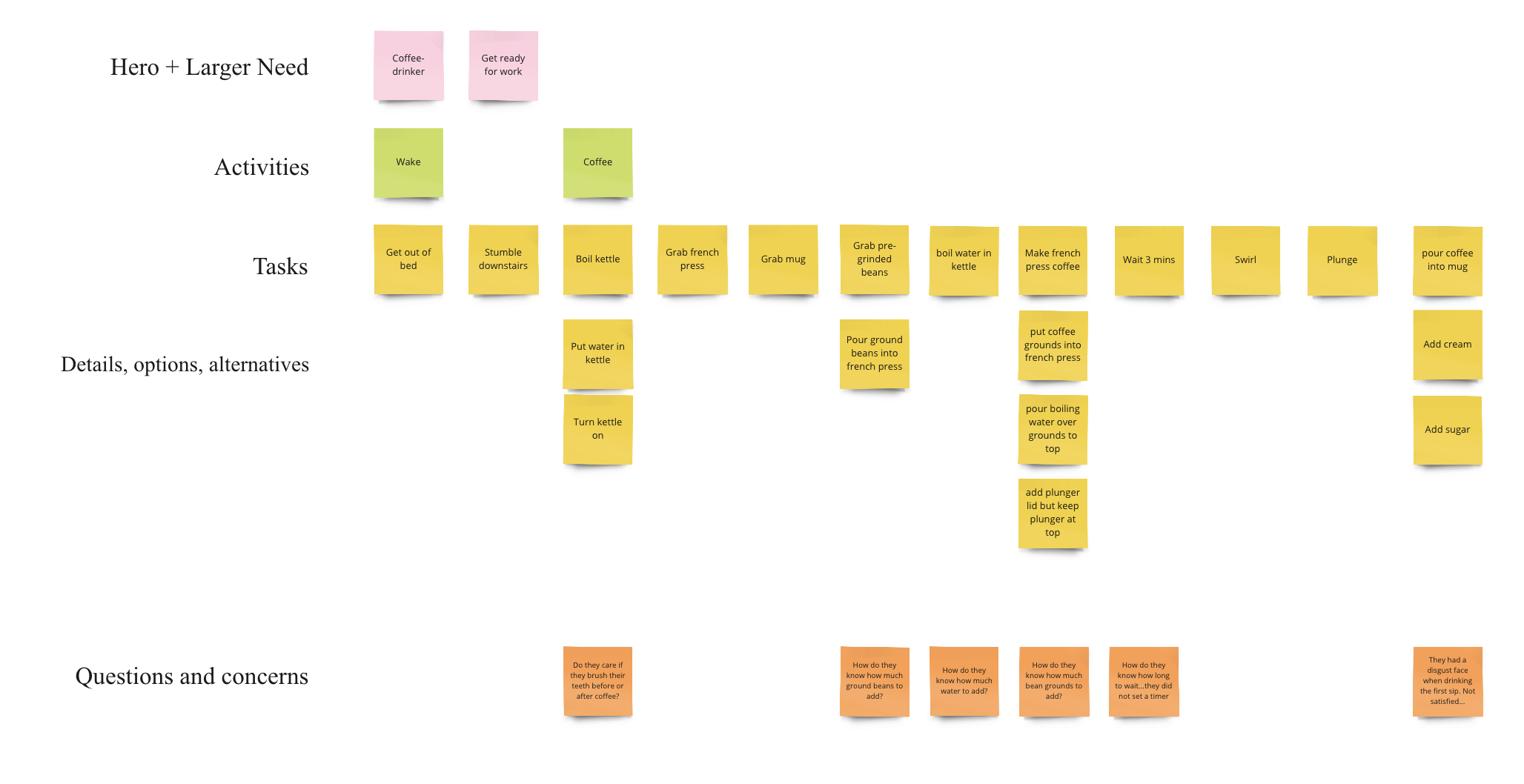
⬇️ In the next tactic, now that you have an overview of your user, choose a question/concern (orange sticky note) to focus on and separate what you have seen from what you believe it means with Anatomy of An Insight.
3
Use Anatomy of An Insight to reflect and broaden your thinking
Use Anatomy of An Insight to reflect and broaden your thinking
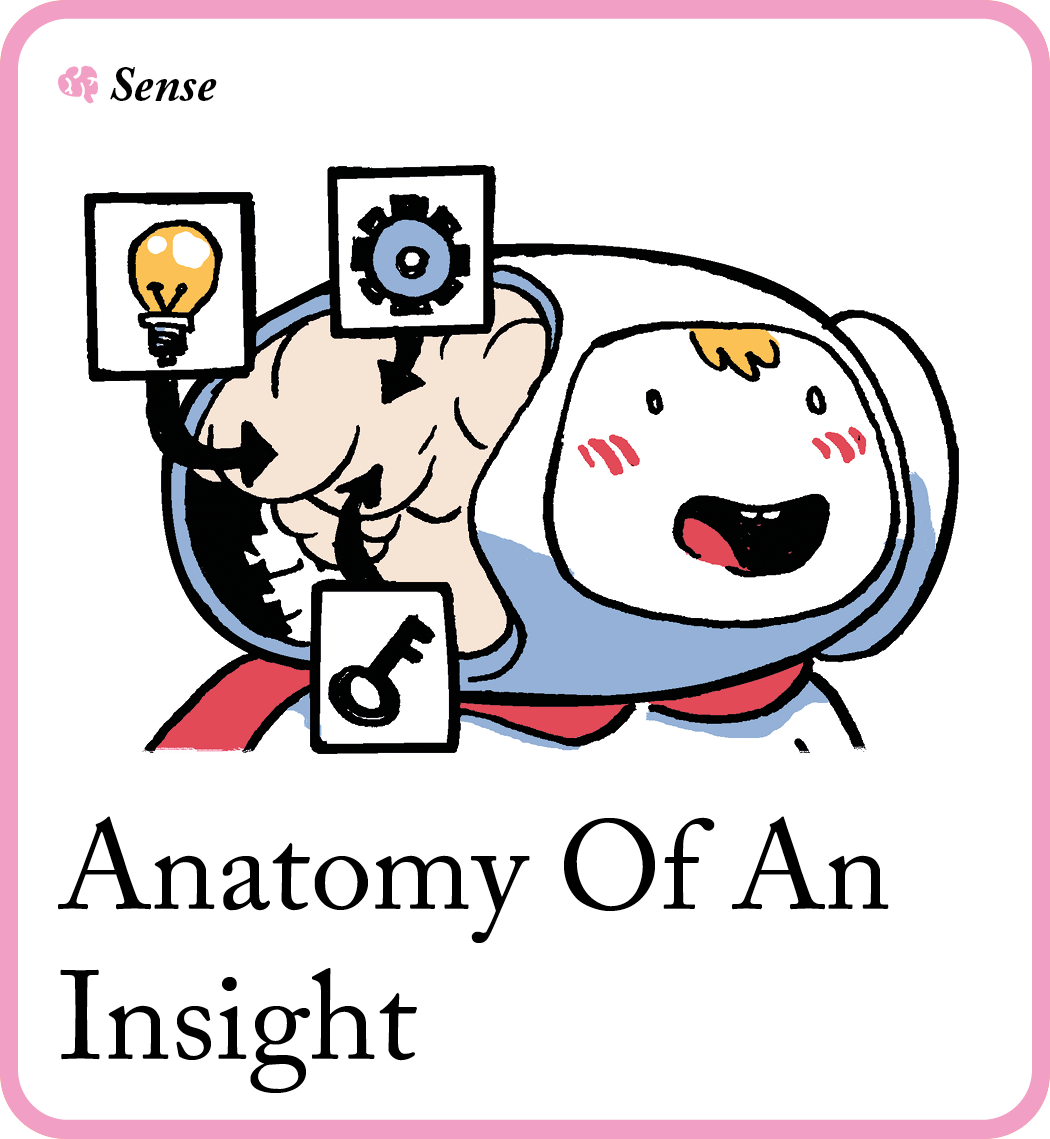
🧠 What’s the goal? Tell more than one story about the situation you’re observing, so you can decide on your best next action.
👀 Why is this important: This tactic helps you separate what you’ve seen or heard (signals) from what you believe it means (stories) and what you think you should do next (options).
“Insights can be described as unexpected shifts to a better story… they transform how we see and feel about the world. Once they are gained, we cannot go back.” – Gary Klein
💡 Tip: try this alone for the first round to develop the skill… but the power of this tactic grows exponentially when you do it with a team.
Instructions
-
Set the scene: “our exploration gave signals for changing direction: what the person (or people) said and did, and what occurred to us as we investigated. Given all the signals we have, we need to decide: do we continue with, abandon, or adapt our idea?”
-
On yellow stickies, have the group (or yourself) list signals observed. In this example we focus on one (but you will want to bring in all of them):

-
Say “given those signals, what’s an option for an action that we might take next?” Write these options on blue stickies.

-
Ask: “what story jumps to mind that explains why that option is a good response to those signals?” Write it on a pink stickies.
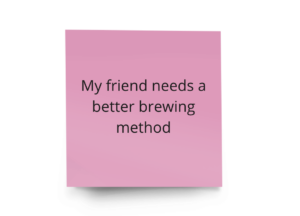
-
Say “that story we’re telling ourselves limits what we can see and do in the world. Write at least two alternative stories that could explain the signals.” Write them on pink stickies. “As you add stories, also add any new signals you realise you’d forgotten.” Write them on a yellow stickies.
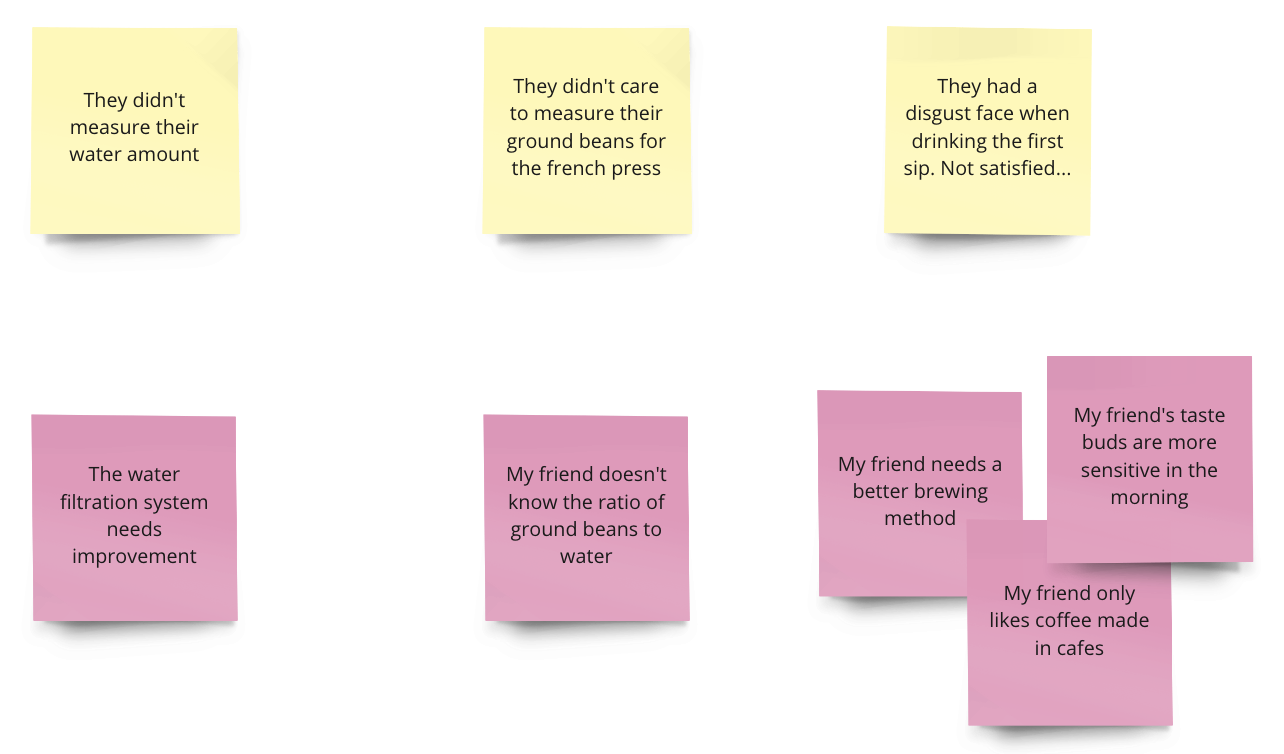
-
Say “for each new story you added, what other options for action would make sense?” Add those on more blue stickies.
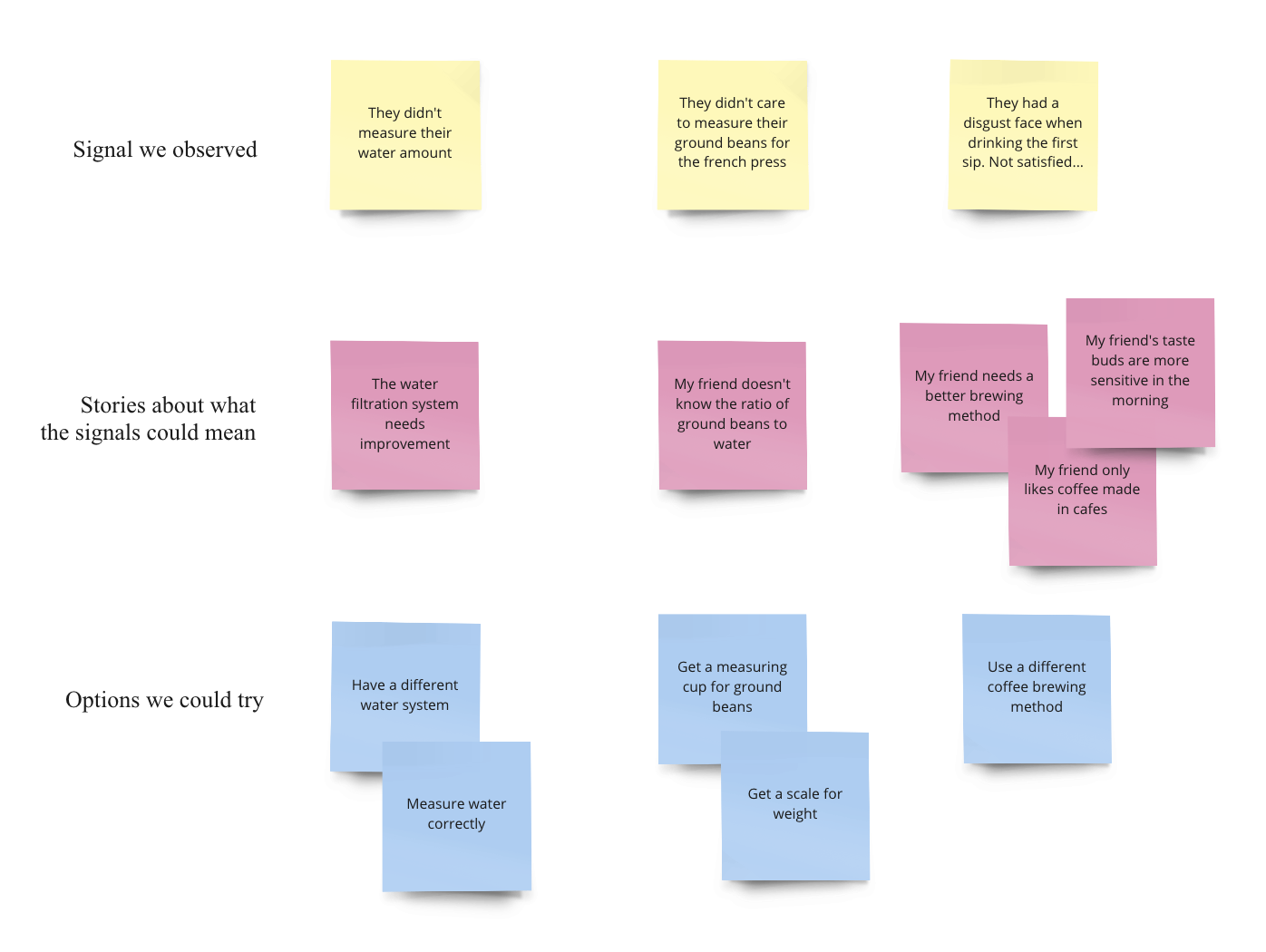
-
Have the group vote on the stories that resonate most with them. The pattern of voting usually reveals a dominant theme or two for what might be going on.
-
In light of the vote, revisit your original idea. Do you feel you want to keep going, abandon it for a better idea, or adapt it?
⬇️ In the next tactic, take the area of change (signal: change coffee brewing method) you have voted for and create three Punchy Prototypes.
4
Use Punchy Prototypes to make quick rough prototypes
Use Punchy Prototypes to make quick rough prototypes

🧠 What’s the goal? Prototype to learn instead of to validate. In 15 minutes, make a rough, words-only or quick solution version of that improved step.
👀 Why is this important: This tactic helps you take action early to learn what needs to change. The awkward truth: most prototypes aren’t effective because they are too polished and expensive, and they’re made one at a time. The secret is to make as many as you can in parallel, as quickly and cheaply as you can, to show you all the ways you’re wrong.
“When we draw our ideas, they talk back to us” – Teresa Torres
💡 Tip: understand the tradeoffs you need to make by testing many ‘wrong’ prototypes in parallel. Start with three prototypes that are minimum effort, to gather feedback.
Instructions
Figure out big picture first, then zoom in to the details:
“If the customer problem is ‘getting from point A to point B’, you could show them an airplane, a submarine, or a car. Once you know they need a car, you could show them a Prius, an SUV, or a pickup truck – to help them tradeoff size and utility against fuel efficiency.” – Bob Moesta
Mini Case Study: Bob was prototyping dish soap. He mixed 18 different combinations of the active ingredients to understand how they interacted. The final product wasn’t any of the 18, but testing the range of recipes in parallel gave the team the understanding they needed to make the right tradeoffs, including foaminess, cleaning power and cost.
Now your turn: prototype to learn. First list a load of ways to, then choose the three with biggest variety.
In this example we are exploring a variety of coffee brewing methods based on our voted on signal from the last tactic.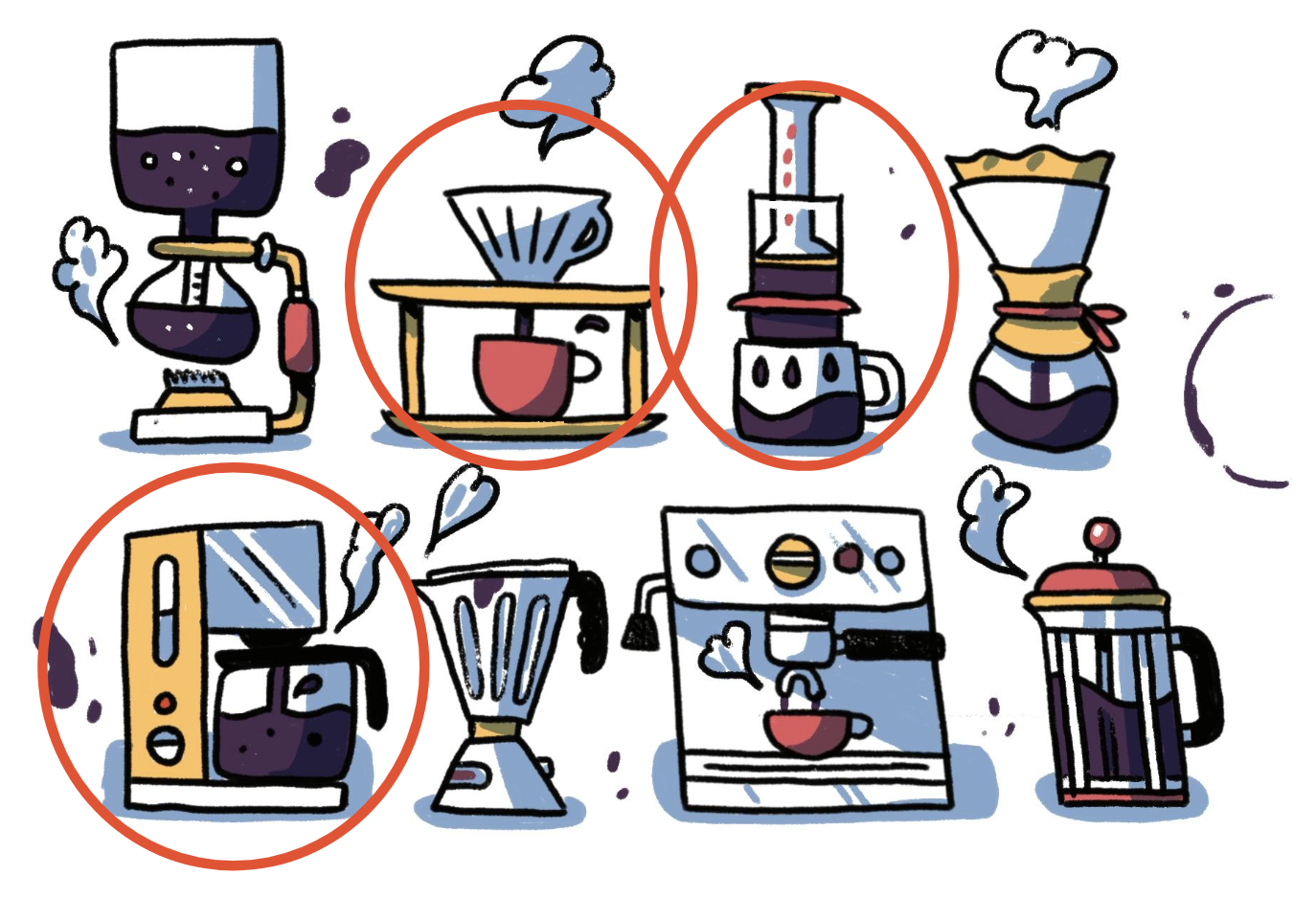
⬇️ In the next tactic, take your rough prototype and test it with your colleagues or friends using the ‘Huh’ Test.
5
Use ‘Huh?’ Test to quickly learn what to iterate
Use ‘Huh?’ Test to quickly learn what to iterate
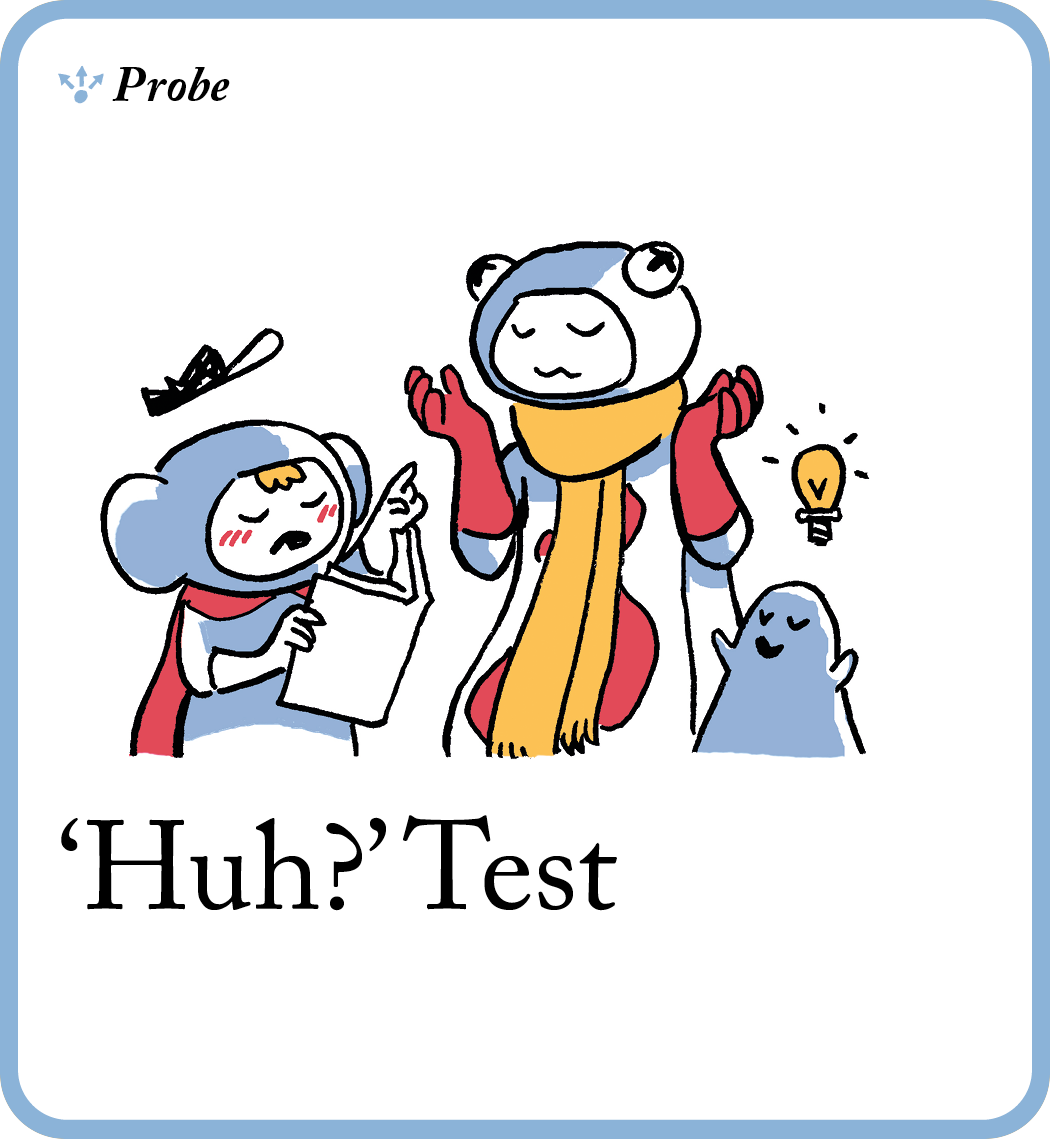
🧠 What’s the goal? Get someone’s gut reaction to your work to see if they understand it – so you know what needs improving.
👀 Why is this important: This tactic, by using feedback, helps you improve writing or design work through: adverts, landing pages, pitch decks, registration forms, articles, realistic prototypes, even complete products…
“Remember: when people tell you something’s wrong or doesn’t work for them, they are almost always right. When they tell you exactly what they think is wrong and how to fix it, they are almost always wrong.” – Neil Gaiman
💡 Tip: you’ll learn fastest by testing draft work that’s only 20–50% ‘done’ – with less invested, it’s easier to hear feedback and make changes.
Instructions
-
Book time with someone who’s unfamiliar with the work. Ideally this is a customer, but a friend can suffice. Allow 20–60 minutes depending on the amount of work to test.
💡 Tip: let them know you’re testing the work (not them), that you need their brutal feedback, and that they can’t hurt your feelings.
-
Describe a real scenario in which the person you’re talking with might come across the work: “Imagine [a friend sends you a link/you’re in a shop. etc.] and you see the following…”.
Example: imagine it is the morning and you want to make yourself a cup of delicious coffee…
-
Show them the work. Don’t explain it. You need to know how people will experience it without you there to explain.
Example: use your three prototypes (that you have at home for quick and easy testing), to quick test on your friend which one they find aligns with their coffee making desires.

-
Invite them to experience the work as naturally as possible. Encourage them to give you a ‘sports commentary’ of their thoughts and feelings as they go through it. Ask them to read the words aloud.
Example: make sure to include simple instructions for them to follow.

-
Watch for clues of Boredom, Interest, Surprise, Confusion (BISC): stumbles, pauses, expressions, body language..
-
When they get stuck or you’re curious about their reaction, prompt with open questions: “What might this be about?”; “Talk me through what you see. What jumped out?”; “What do you expect happens next?”; “What do you think it should say?”
💡 Tip: don’t correct them or justify anything. When you notice they misunderstood, note down what you haven’t made clear enough.
-
At the end, ask them to summarise what they experienced in their own words. Even when someone thinks your idea made sense, what they interpreted may not be what you intended.
Example: you might notice that you thought your friend would like the pour over, but they actually like the drip coffee the best because of the ease of use and the coffee taste reminded them of their childhood.
-
Next, improve the work based on what you learned and repeat the test with more people until everyone ‘gets it’ well enough.
⬇️ Now that you are done the five tactics, remember that it’s a loop. You might go back and update your Punchy Prototype, or go back to the Human Story Map, or even back to another Diagnostic Shop Along. But loop until you do the ‘Huh’ Test and until people get it/it works.
What ways can I use this recipe?
- 10-minute challenge: choose the tactic that scares you the most and try it out with a friend or colleague. Don’t overthink it! If nothing scares you, lucky you. Start with the Diagnostic Shop Along.
- One-hour complete loop: this will mean five short, separate sessions (no more than ten minutes on each); one for each of the five tactics. Try it out with a friend or colleague with something low risk, like making coffee, to get comfortable before you use this recipe in the wild.
- Take your time: once you’ve tried a ten-minute or one-hour session, you’re ready to use this recipe with real customers! Schedule each session for an hour, which should give you plenty of time.
Some tips
- Don’t make it hard. Take tiny, bold steps every day instead of changing everything all at once. Just do it for 5 minutes (or even 2 minutes).
- Getting user insight can be uncomfortable. Mastering user feedback involves enduring the discomfort of criticism and embracing repetition.
- Mistakes are important. They’re how you learn! So don’t try to be perfect, but do pay careful attention to failure.
- You are not your work! Don’t think “I need to get this right”, think “I want to find out as fast as possible what I can fix to make the experience for the user better.”
What next?
Congratulations you have completed your first round of Get into your customer’s mind! But this is only the beginning. You have honed the skill of mastering customer feedback by enduring criticism and embracing repetition, even before your work was ‘ready’. You’ve gained the confidence to address flaws, and fostered mental resilience in your team, enabling them to fearlessly share ideas early and often with customers.
Remember, mistakes are important. They’re how you learn! So don’t try to be perfect, but do pay careful attention to failure. Now, would be a good time to learn How to Unlock Innovation.


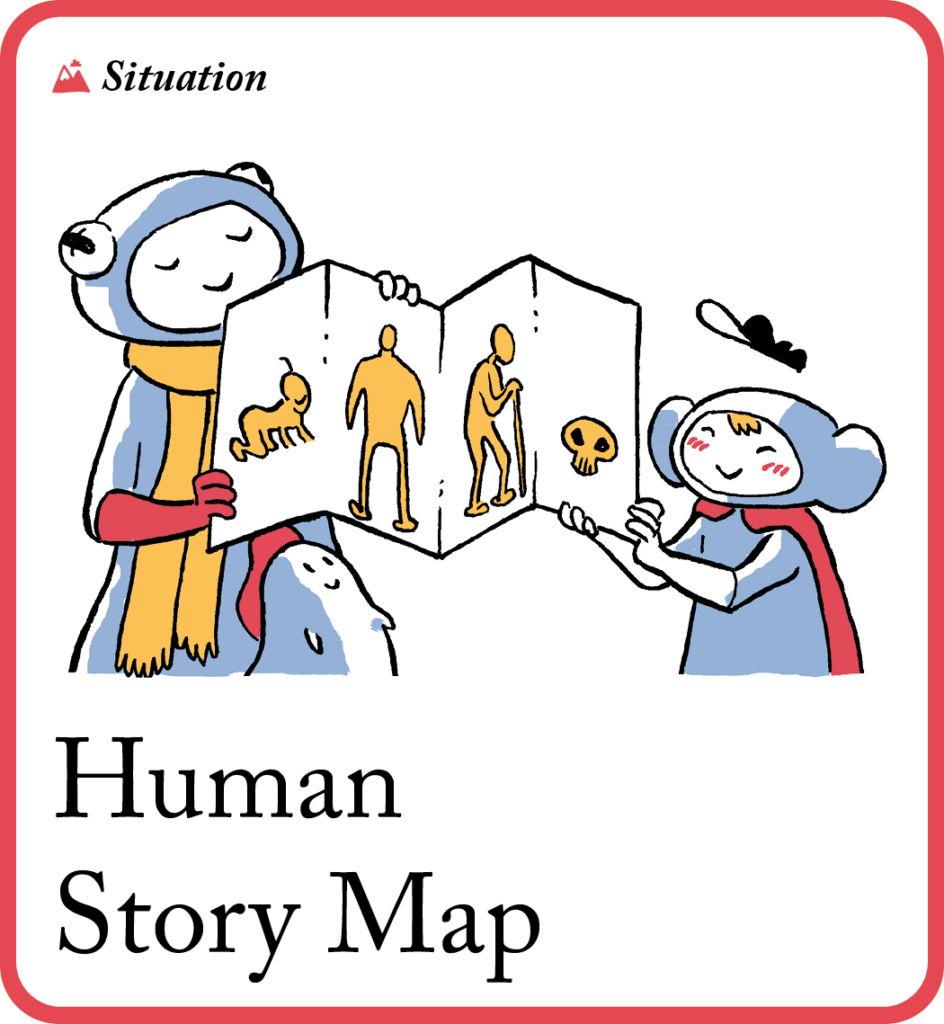
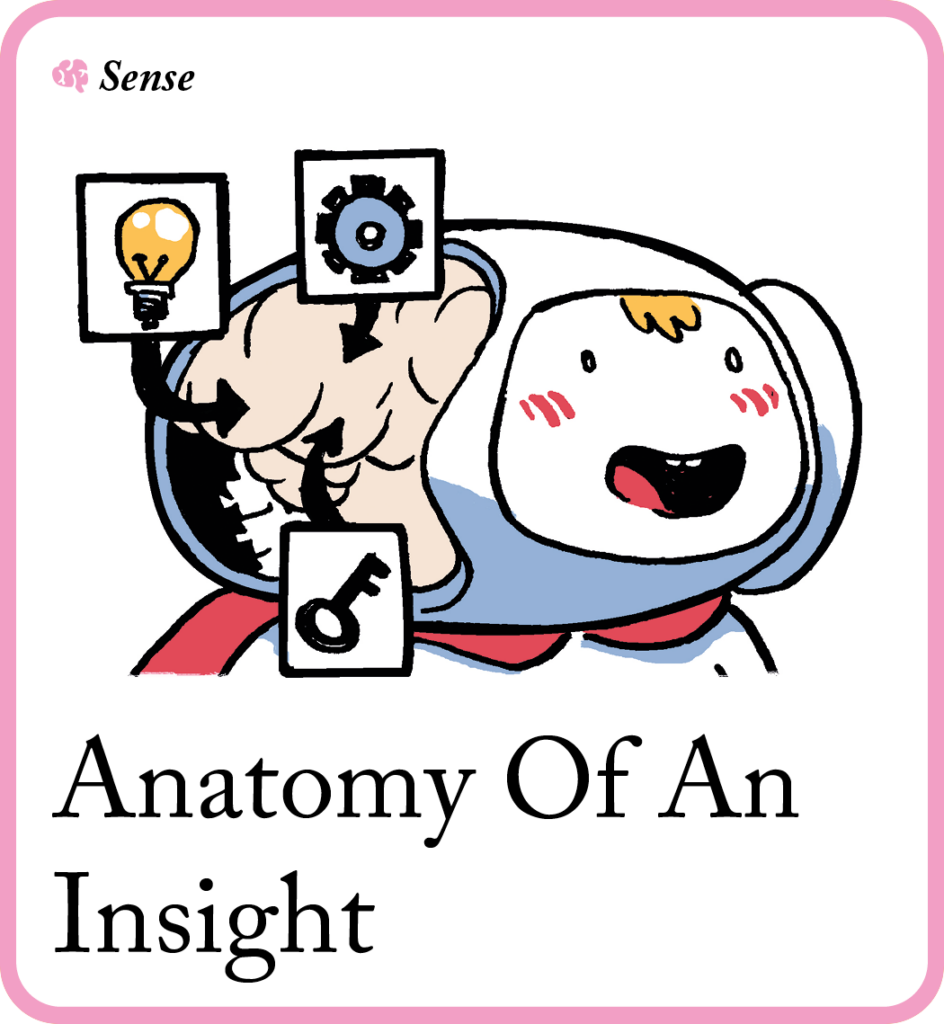

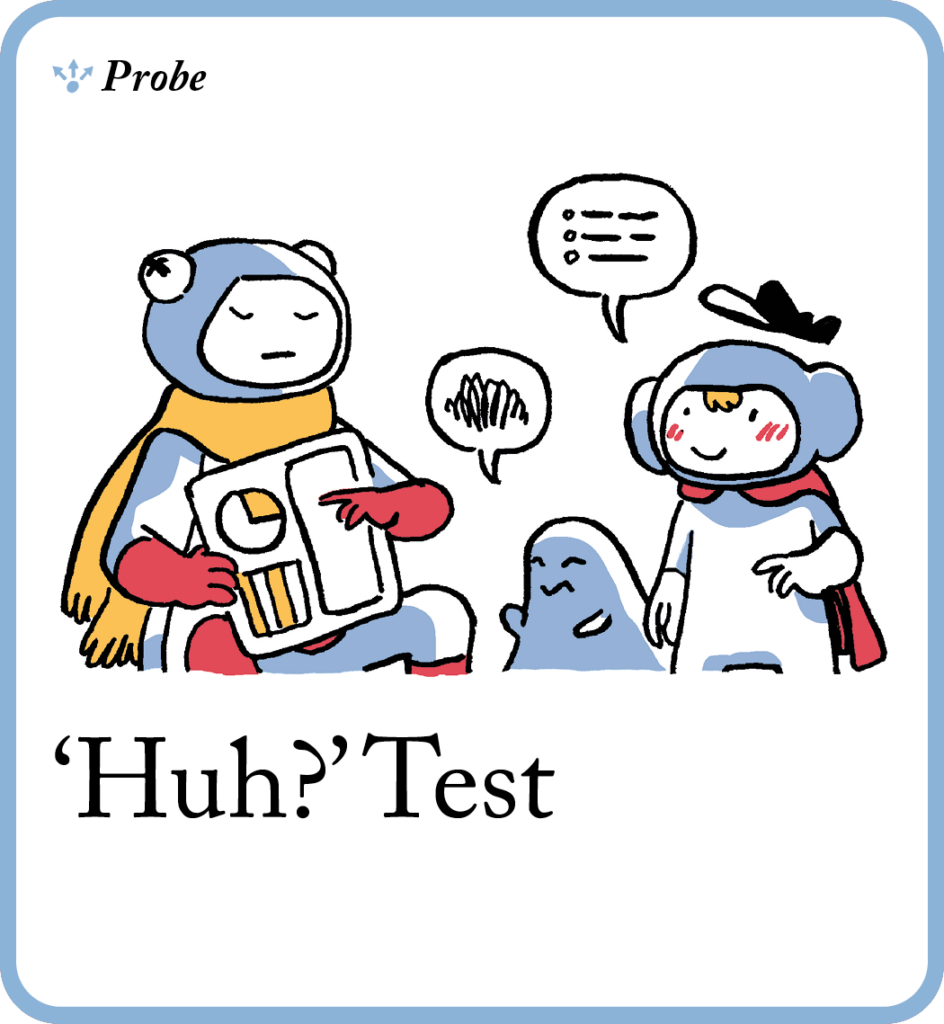

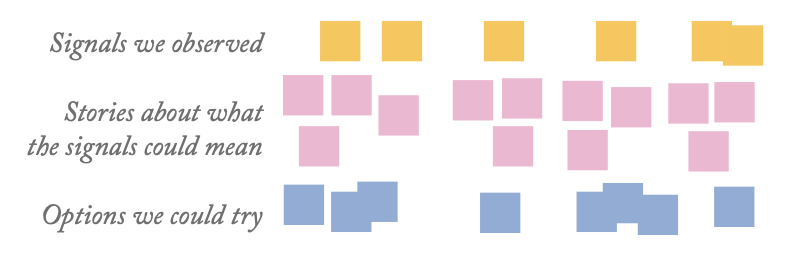
I purchased four of the Pip Decks. Workshop; Strategy; Innovation and Story Telling.
So I am running an Organisational Values Workshop in early December and I am honestly struggling to structure the day that then lands this agency at the key values for them. Grateful if you could direct my query for assistance!
Regards